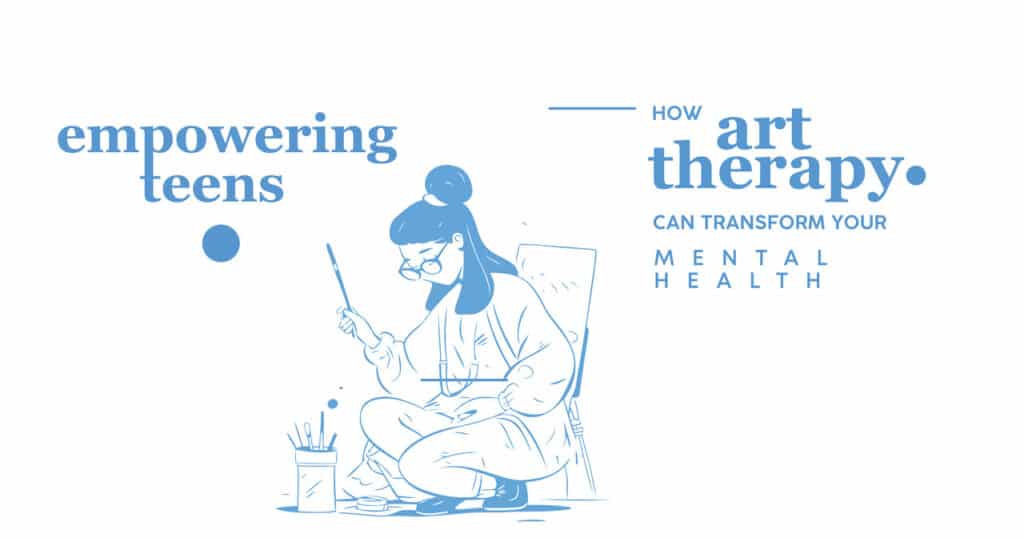Introduction to Art Therapy
Adolescence is a critical period of self-discovery and emotional development. For many teens, expressing their feelings and thoughts can be challenging. Art therapy offers a unique and powerful creative outlet to facilitate self-expression and enhance mental well-being. This comprehensive guide will explore how art therapy empowers teens, detailing its benefits, methods, and real-life success stories.
What is Art Therapy?
Art therapy is a form of psychotherapy that utilizes the creative process of making art to improve a person’s mental, emotional, and physical well-being. It combines traditional therapeutic techniques with artistic mediums such as drawing, painting, sculpture, and other forms of visual art. Art therapy provides a holistic approach by addressing emotional, cognitive, and social needs.
The Benefits of Art Therapy for Teens
Emotional Expression
Art therapy provides a safe space for teens to express their emotions. Through creative activities, they can explore and communicate complex emotions that might be hard to articulate verbally. This therapeutic approach helps in navigating difficult emotions and emotional experiences.
Stress Relief
Engaging in art-making can be incredibly soothing and meditative. Focusing on a creative project allows teens to escape their worries and immerse themselves in the moment, reducing stress levels and promoting a sense of calm. The use of artistic processes can aid in stress management and stress reduction.
Boosting Self-Esteem
Creating art can boost self-esteem and self-efficacy. Completing an art project provides a sense of accomplishment, and positive feedback from therapists and peers further enhances this effect. This sense of achievement is crucial for adolescent development and personal development journey.
Developing Problem-Solving Skills
The creative process involved in art therapy encourages teens to think critically and solve problems. Whether deciding how to represent an emotion through color or figuring out the best way to construct a sculpture, these art therapy activities enhance cognitive abilities and encourage innovative thinking. Art therapy techniques help in developing cognitive development and problem-solving skills.
Improving Social Skills
Art therapy sessions often occur in group settings, providing teens with opportunities to interact with peers. This environment fosters a sense of community, improves communication skills, and helps build a sense of community. The group setting enhances interpersonal skills and social skills.
How Art Therapy Works
The Role of the Art Therapist
Art therapists are trained professionals who guide teens through the creative process. They help interpret the artwork and facilitate discussions, leading to deeper insights. The therapist’s role is crucial in creating a safe and supportive environment where teens feel comfortable expressing themselves. The therapeutic relationship is vital for effective art therapy.
Types of Art Therapy Activities
- Drawing and Painting: These fundamental art activities are great for expressing emotions and exploring inner thoughts. They use a variety of art materials such as oil pastels and glitter glue.
- Sculpture: Working with clay or other textured materials can be a tactile way to process emotional experiences.
- Collage: Creating collages can help teens piece together different aspects of their daily lives and thoughts, often using natural materials and artistic mediums.
- Digital Art: With the rise of technology, digital art therapy has become a popular option, especially appealing to tech-savvy teens. This form of art therapy incorporates digital tools and creative processes.
The Therapeutic Process
Art therapy sessions typically begin with discussing the teen’s current feelings or issues. The therapist then guides the teen in a creative activity tailored to their needs. After the art-making process, the therapist and teen discuss the artwork and explore its meaning. This therapeutic process often includes art therapy exercises and art therapy ideas to address specific concerns.
Who Can Benefit from Art Therapy?
Teens with Anxiety and Depression
Art therapy can be particularly beneficial for teens struggling with anxiety and depression. The creative process helps them express feelings they might find difficult to discuss and distracts them from their worries. This method is a powerful tool for addressing mental health conditions.
Teens with Behavioral Issues
For teens with behavioral issues, art therapy offers a constructive outlet for their energy and emotions. It can help them develop self-control and find positive ways to express themselves. This positive outlet is essential for emotional health.
Teens with Trauma
Art therapy is a powerful tool for teens who have experienced trauma. Creating art allows them to process their experiences nonverbally, which can be less intimidating than traditional talk therapy. This approach is beneficial for those dealing with Traumatic Stress Disorder and other mental health disorders.
Art Therapy vs. Traditional Therapy
Creative Expression vs. Verbal Expression
While traditional therapy relies heavily on verbal communication, art therapy provides an alternative for those who struggle to articulate their feelings. This can be especially beneficial for teens, who may find it easier to express themselves through art. Artistic expression offers a different path compared to the verbal expression of traditional methods.
Engaging and Enjoyable
Art therapy is often more engaging and enjoyable than traditional therapy sessions. The creative process can make therapy feel less like a chore and more like a fun and rewarding activity. This engagement often leads to greater therapeutic benefits.
Holistic Approach
Art therapy takes a holistic approach to mental health by addressing emotional, cognitive, and social needs. This comprehensive method can lead to more effective and long-lasting results. By integrating various art forms and creative activities, art therapy supports overall holistic well-being.
How to Get Started with Art Therapy
Finding a Qualified Art Therapist
When considering art therapy, finding a qualified art therapist is essential. Look for professionals with the necessary credentials and experience working with teens. The Art Therapy Practitioner Certification Course can be a useful reference for verifying qualifications.
Setting Goals
Before starting art therapy, discuss your goals with the therapist. Clear objectives will help guide the sessions and ensure the treatment meets your needs. Setting goals will also facilitate the selection of beneficial art therapy activities and art therapy exercises.
Creating a Comfortable Space
Ensure that the therapy space is comfortable and conducive to creativity. A safe and welcoming environment is crucial for effective art therapy. Using a variety of art materials and creating a stimulating space can enhance the art therapy experience.
FAQs
Q: What is the primary goal of art therapy?
A: The main goal of art therapy is to use the creative process to help individuals express emotions, gain insights, and improve mental health.
Q: Is art therapy suitable for all teens?
A: While art therapy can benefit many teens, it may not suit some. It’s essential to consult with a qualified art therapist to determine if it fits.
Q: How long does an art therapy program last?
A: The duration of art therapy programs can vary. Some may be short-term, lasting a few weeks, while others might extend over several months. Art therapy programs can be tailored to the needs of teenage clients.
Q: Can art therapy be combined with other forms of treatment?
A: Yes, art therapy is often used in conjunction with traditional therapy methods, such as cognitive-behavioral therapy (CBT) or medication, to provide a complete treatment plan. It can also complement music therapy and drama therapy.
Conclusion
Art therapy offers a unique and practical approach to supporting teen mental health. Combining creative expression with therapeutic techniques gives teenagers a safe space to discover their emotions, reduce stress, and build self-esteem. Whether dealing with anxiety, depression, behavioral issues, or trauma, art therapy can be a transformative tool in a teen’s mental health journey. If you or a loved one is considering art therapy, seek a qualified professional to guide you through this creative and healing process.
Empowering Teen Mental Health with Art Therapy
If you or someone you know is considering art therapy, don’t hesitate to seek professional guidance. The proper support and a tailored approach can make all the difference in your mental health journey.





